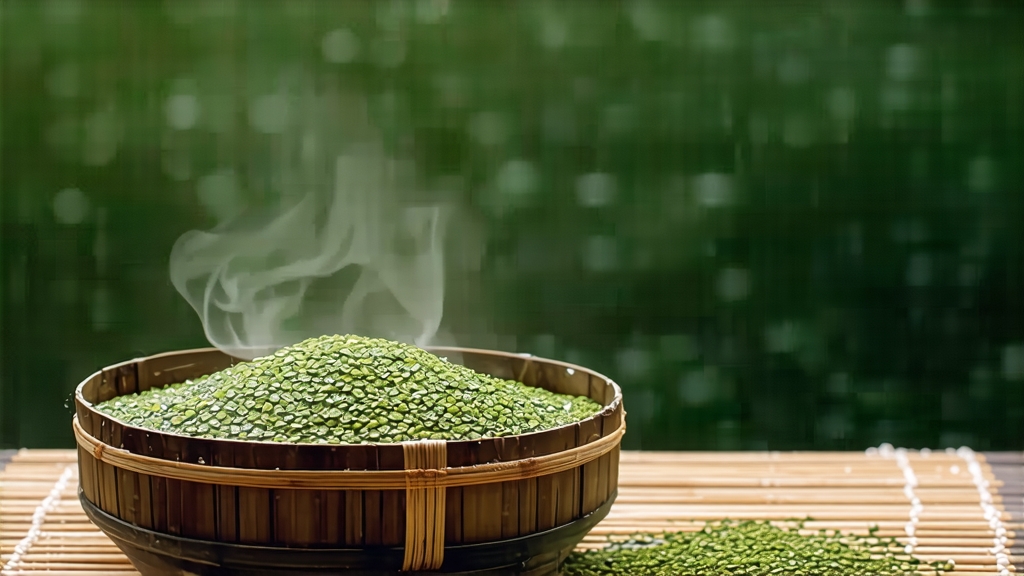
Biluochun, whose name literally means “Green Snail Spring,” is one of China’s ten most celebrated teas, yet it remains a quiet treasure outside the circles of devoted green-tea lovers. Grown on the mist-lapped peninsulas of Dongting Mountain that rise from Taihu Lake in Jiangsu Province, this tea carries the perfume of apricot blossoms, loquat skin, and a faint marine note that locals describe as “lake qi.” Its history, processing, and even the way it unfurls in water are inseparable from the terroir of an inland sea that moderates temperature and traps cloud cover like a silk scarf around the hills.
Historical whispers place Biluochun’s birth during the late Tang dynasty, when monks on Turtle Head Isle plucked wild tea growing among peach and plum trees. The fruit trees flowered so profusely that their pollen settled on the leaf surfaces, imprinting a natural fruity scent that later growers would spend centuries trying to preserve. By the Kangxi era of the Qing dynasty the tea had become an imperial tribute; legend says the emperor was so struck by its curling shape and jade color that he renamed it from “Xia Sha Ren Xiang” (“Scary-fragrant”) to the more elegant “Biluochun.” The new name stuck, and with it came imperial patronage that expanded cultivation from a few monastic terraces to the entire east and west Dongting ranges.
Strictly speaking, only leaf picked within the 12,000 mu (about 2,000 hectares) designated core zone can claim the protected geographical indication “Dongting Biluochun.” Outside this micro-zone the same cultivar—traditionally a seed-selected strain called Dongting Qunti—yields pleasant but less nuanced tea. The cultivar’s leaves are unusually small, almost round, with a downy reverse side that looks like frost on a plum. This pubescence is critical: when heat is applied during frying it retracts into the leaf, forming the microscopic coils that give the finished tea its velvety mouthfeel.
The picking calendar is merciless: buds must be harvested in the three weeks before Qingming festival, when two leaves clasp an unopened tip the size of a sparrow’s tongue. Experienced pluckers work at dawn, before the lake mist lifts, so that cell turgor is high and oxidation enzymes remain dormant. A five-kilogram basket of fresh leaf will shrink to barely one kilogram of dry tea, testimony to how much water these nascent shoots hold.
Crafting Biluochun is a duet between hand and fire that has changed little since the eighteenth century. The first step, “shaqing” or kill-green, is done on a cast-iron wok heated to 180 °C. The tea master tosses 250 grams of leaf in a clockwise spiral, using only the heel of the palm; after forty seconds the temperature is dropped to 120 °C and the motion shifts to a gentle pressing that forces a small amount of sap to the surface, sealing in fragrance. Next comes “cuotuan,” the moment that creates the signature spiral: the master rubs handfuls of leaf along the wok’s rim in a motion reminiscent of rolling dumpling skins. The friction tightens the bud into a tiny curl and fuses the down to the leaf, giving the dry tea its silver-green shimmer. The final low-temperature drying phase, “hongpei,” lasts barely six minutes, yet it accounts for half of the aroma fixation. A veteran fryer knows the tea is ready when the smell shifts from fresh orchid to a deeper peach-pit note and the leaf moisture drops to 5 percent.
To brew Biluochun well one must respect its delicacy. Use spring water with a TDS below 100 ppm; if tap water is the only option, let it stand overnight to allow chlorine to dissipate. Pre-heat a tall glass or a 150 ml porcelain gaiwan, then add 3 grams of tea—about two heaping teaspoons. The water temperature should be 70 °C, just hot enough to feel like a warm bath to the finger. Pour 30 ml of water first, enough to flood the bottom layer, and watch the spirals perform their “tea dance”: they tumble, sink, and within seconds float back up, unfurling into miniature green flags. After fifteen seconds add water to the rim and decant into a fairness pitcher; the first infusion lasts no more than forty seconds. Subsequent infusions can be lengthened by ten seconds each